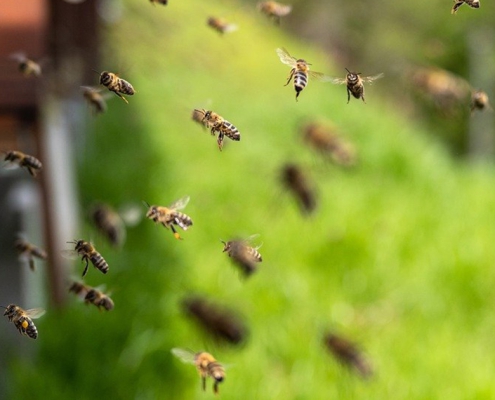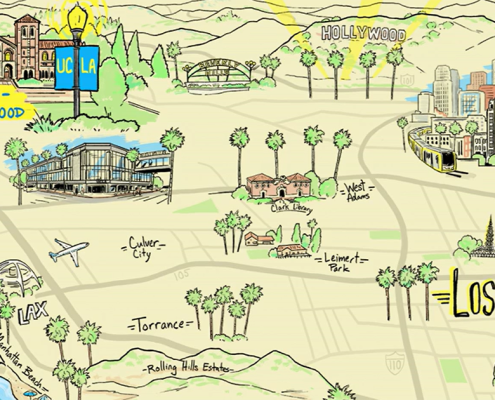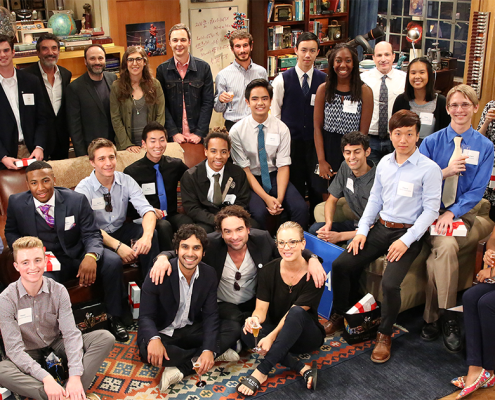 https://www.college.ucla.edu/wp-content/uploads/2024/07/bees-7996596_1500-630.jpg
630
1500
Alvaro Castillo
https://www.college.ucla.edu/wp-content/uploads/2019/07/Uxd_Blk_College-e1557344896161.png
Alvaro Castillo2024-07-05 10:24:372024-07-11 14:37:04Thanks to their thriving apiary atop the Life Sciences building, the Bruin Beekeepers, which started in 2018, achieved their first honey harvest in June
https://www.college.ucla.edu/wp-content/uploads/2024/07/bees-7996596_1500-630.jpg
630
1500
Alvaro Castillo
https://www.college.ucla.edu/wp-content/uploads/2019/07/Uxd_Blk_College-e1557344896161.png
Alvaro Castillo2024-07-05 10:24:372024-07-11 14:37:04Thanks to their thriving apiary atop the Life Sciences building, the Bruin Beekeepers, which started in 2018, achieved their first honey harvest in June https://www.college.ucla.edu/wp-content/uploads/2024/06/COMMENCEMENTPROFILESHERO-1500-630-1.png
630
1500
Alvaro Castillo
https://www.college.ucla.edu/wp-content/uploads/2019/07/Uxd_Blk_College-e1557344896161.png
Alvaro Castillo2024-06-07 16:16:132024-06-10 08:58:52Congratulations, UCLA College Class of 2024!
https://www.college.ucla.edu/wp-content/uploads/2024/06/COMMENCEMENTPROFILESHERO-1500-630-1.png
630
1500
Alvaro Castillo
https://www.college.ucla.edu/wp-content/uploads/2019/07/Uxd_Blk_College-e1557344896161.png
Alvaro Castillo2024-06-07 16:16:132024-06-10 08:58:52Congratulations, UCLA College Class of 2024!
Scientific rigor and creativity on display at Undergraduate Research Week 2024
Meet some of this year’s more than 1,600 student researchers
By…
 https://www.college.ucla.edu/wp-content/uploads/2024/04/The-future-is-now-1500-630.png
630
1500
Alvaro Castillo
https://www.college.ucla.edu/wp-content/uploads/2019/07/Uxd_Blk_College-e1557344896161.png
Alvaro Castillo2024-04-02 08:49:372024-04-19 16:01:04The Future Is Now: UCLA forges a path further strengthening its connection and commitment to Los Angeles
https://www.college.ucla.edu/wp-content/uploads/2024/04/The-future-is-now-1500-630.png
630
1500
Alvaro Castillo
https://www.college.ucla.edu/wp-content/uploads/2019/07/Uxd_Blk_College-e1557344896161.png
Alvaro Castillo2024-04-02 08:49:372024-04-19 16:01:04The Future Is Now: UCLA forges a path further strengthening its connection and commitment to Los Angeles https://www.college.ucla.edu/wp-content/uploads/2024/03/Lorre-crop-1500-630.png
630
1500
Alvaro Castillo
https://www.college.ucla.edu/wp-content/uploads/2019/07/Uxd_Blk_College-e1557344896161.png
Alvaro Castillo2024-03-04 14:54:012024-03-05 17:49:27An even Bigger Bang: Chuck Lorre’s $24.5 million gift to empower low-income STEM students
https://www.college.ucla.edu/wp-content/uploads/2024/03/Lorre-crop-1500-630.png
630
1500
Alvaro Castillo
https://www.college.ucla.edu/wp-content/uploads/2019/07/Uxd_Blk_College-e1557344896161.png
Alvaro Castillo2024-03-04 14:54:012024-03-05 17:49:27An even Bigger Bang: Chuck Lorre’s $24.5 million gift to empower low-income STEM students https://www.college.ucla.edu/wp-content/uploads/2024/02/FulbrightImage-1500-630.png
630
1500
Alvaro Castillo
https://www.college.ucla.edu/wp-content/uploads/2019/07/Uxd_Blk_College-e1557344896161.png
Alvaro Castillo2024-02-13 12:10:542024-02-28 11:05:02Three UCLA College professors among UCLA’s Fulbright U.S. Scholars for 2023–24
https://www.college.ucla.edu/wp-content/uploads/2024/02/FulbrightImage-1500-630.png
630
1500
Alvaro Castillo
https://www.college.ucla.edu/wp-content/uploads/2019/07/Uxd_Blk_College-e1557344896161.png
Alvaro Castillo2024-02-13 12:10:542024-02-28 11:05:02Three UCLA College professors among UCLA’s Fulbright U.S. Scholars for 2023–24
